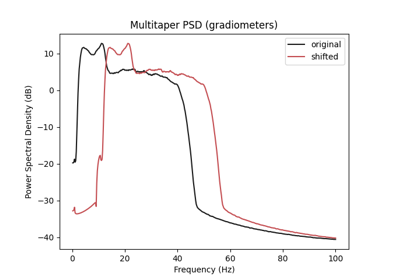braindecode.augmentation.FrequencyShift#
- class braindecode.augmentation.FrequencyShift(probability, sfreq, max_delta_freq=2, random_state=None)[source]#
Add a random shift in the frequency domain to all channels.
Note that here, the shift is the same for all channels of a single example.
- Parameters:
probability (float) – Float setting the probability of applying the operation.
sfreq (float) – Sampling frequency of the signals to be transformed.
max_delta_freq (float | torch.Tensor, optional) – Maximum shift in Hz that can be sampled (in absolute value). Defaults to 2 (shift sampled between -2 and 2 Hz).
random_state (int | numpy.random.Generator, optional) – Seed to be used to instantiate numpy random number generator instance. Defaults to None.
Methods
- get_augmentation_params(*batch)[source]#
Return transform parameters.
- Parameters:
X (tensor.Tensor) – The data.
y (tensor.Tensor) – The labels.
- Returns:
params – Contains
- delta_freqfloat
The amplitude of the frequency shift (in Hz).
- sfreqfloat
Sampling frequency of the signals to be transformed.
- Return type:
- static operation(X, y, delta_freq, sfreq)[source]#
Adds a shift in the frequency domain to all channels.
Note that here, the shift is the same for all channels of a single example.
- Parameters:
X (torch.Tensor) – EEG input example or batch.
y (torch.Tensor) – EEG labels for the example or batch.
delta_freq (float) – The amplitude of the frequency shift (in Hz).
sfreq (float) – Sampling frequency of the signals to be transformed.
- Returns:
torch.Tensor – Transformed inputs.
torch.Tensor – Transformed labels.

